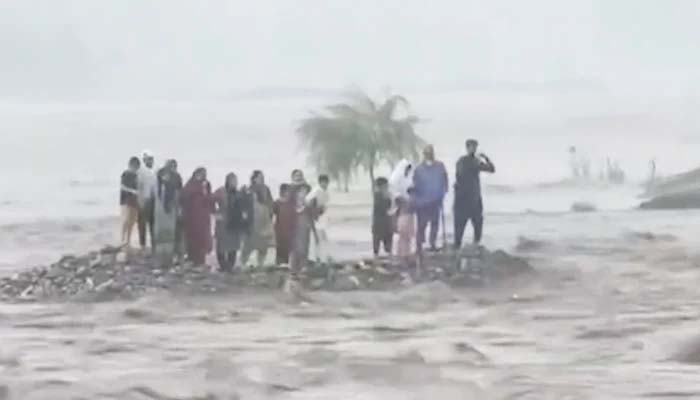
Tourist Tragedy in Swat: Flash Floods Kill 13 in Riverbank Disaster
Eyewitnesses describe a horrifying scene. “Everything happened within seconds,” said one survivor. “
A peaceful breakfast by the Swat River turned into a deadly tragedy as sudden flash floods swept away 13 unsuspecting tourists near Mingora after heavy rainfall.
Swat, Pakistan — What began as a serene morning by the riverside turned into a heart-wrenching tragedy as at least 13 tourists lost their lives in a sudden flash flood in the Swat River on Friday. The incident occurred near Mingora, the largest city in the Swat Valley, following days of heavy monsoon rainfall that swelled the river’s water levels beyond safety.
This devastating event has sent shockwaves across Pakistan, raising concerns about tourism safety, weather awareness, and the urgent need for environmental risk management in the country’s scenic but disaster-prone areas.
A Morning of Leisure Turns Fatal
The victims, who were visiting the region for leisure, had reportedly set up for breakfast along the riverbank — a common activity among tourists who flock to Swat Valley for its natural beauty, cool weather, and peaceful riverside spots.
According to rescue officials, the river’s water level rose dramatically and without warning. The strong current swept away several people before they had a chance to react. Locals attempted to intervene, and rescue teams from the Provincial Disaster Management Authority (PDMA) rushed to the site. Despite their efforts, 13 lives were confirmed lost, while a few others were rescued with injuries.
Swat Valley: A Tourism Gem With Hidden Dangers
Swat Valley, often dubbed the “Switzerland of Pakistan,” is famous for its lush green valleys, snowcapped peaks, and winding rivers. Each year, thousands of domestic and international tourists travel to this region, particularly during the summer months.
However, Swat’s natural beauty comes with its share of environmental risks. Monsoon rains from June to August frequently lead to flash floods, landslides, and river surges — posing serious threats to unprepared visitors. Despite these recurring patterns, many tourists remain unaware or are ill-informed about the risks.
Weather Warnings and a Lack of Awareness
Meteorologists had forecasted heavy rainfall in the region two days prior to the incident. Local authorities issued general advisories, but no specific evacuation orders were given for riverside areas. Rescue officials now say the tragedy could have been avoided if tourists had been warned about staying away from riverbanks.
Environmental and tourism experts argue that the lack of clear signage, safety protocols, and guided awareness programs in such tourist-heavy areas contributes to repeated mishaps.
“This was a preventable tragedy,” said one local volunteer. “Tourists love sitting by the river, but they don’t understand how dangerous it can become — especially during or after rains.”
Emergency Response and Rescue Operations
After the incident, the PDMA and local rescue units quickly mobilized. Divers and boats were deployed to retrieve bodies from the swollen river. Medical teams treated the injured on-site before transferring them to nearby hospitals.
While emergency response teams acted swiftly, the event highlighted gaps in preparedness. There were no barricades or warning signs near the site of the incident, and locals report that similar flash floods have occurred in the same area in previous years.
Voices From the Ground
Eyewitnesses describe a horrifying scene. “Everything happened within seconds,” said one survivor. “We were eating breakfast, and suddenly the water came roaring toward us. People were screaming and running, but there was nowhere to go.”
Families of the victims are demanding accountability. Many are calling on local authorities to install safety warnings, hire more patrolling officers, and launch public awareness campaigns aimed at educating tourists on environmental hazards.
The Broader Impact on Pakistan’s Tourism Industry
This tragedy casts a shadow over Pakistan’s growing tourism sector. Over the past few years, the country has made significant efforts to promote travel in northern areas, including Swat, Hunza, and Skardu. Government campaigns and social media influencers have helped paint Pakistan as a hidden paradise for adventure seekers.
However, repeated natural disasters and preventable deaths threaten to reverse that image. International tourists, in particular, may view such incidents as signs of poor safety infrastructure — ultimately affecting tourism revenue and community livelihoods.
What Can Be Done to Prevent Future Tragedies?
To avoid similar disasters in the future, experts suggest a multi-layered approach:
- Early Warning Systems
Deploy flood alert systems with SMS notifications, loudspeakers in high-risk zones, and real-time weather apps for travelers.
- Tourist Education
Create informational brochures, signage, and briefings at hotels and tourist hubs about weather-related risks and safety zones.
- Restricted Access to Hazard Zones
Limit access to riversides during the monsoon season with physical barriers and patrolling officers.
- Rescue Training and Equipment
Provide basic emergency training to locals and tourist operators, and equip nearby stations with rescue gear such as life jackets and inflatable boats.
- Accountability and Transparency
Encourage transparency in reporting such incidents and develop clear safety protocols through local governance.
Conclusion: Nature’s Beauty Demands Respect
The tragic deaths of 13 tourists in Swat serve as a sobering reminder that nature’s beauty must be approached with respect, caution, and awareness. While the mountains, rivers, and forests offer incredible experiences, they also harbor risks — especially in the era of increasingly unpredictable weather patterns.
For Pakistan to continue its momentum as a global tourism destination, it must invest in protecting both its natural wonders and the people who come to enjoy them. Only then can tourism thrive without turning into tragedy.





Comments are closed, but trackbacks and pingbacks are open.